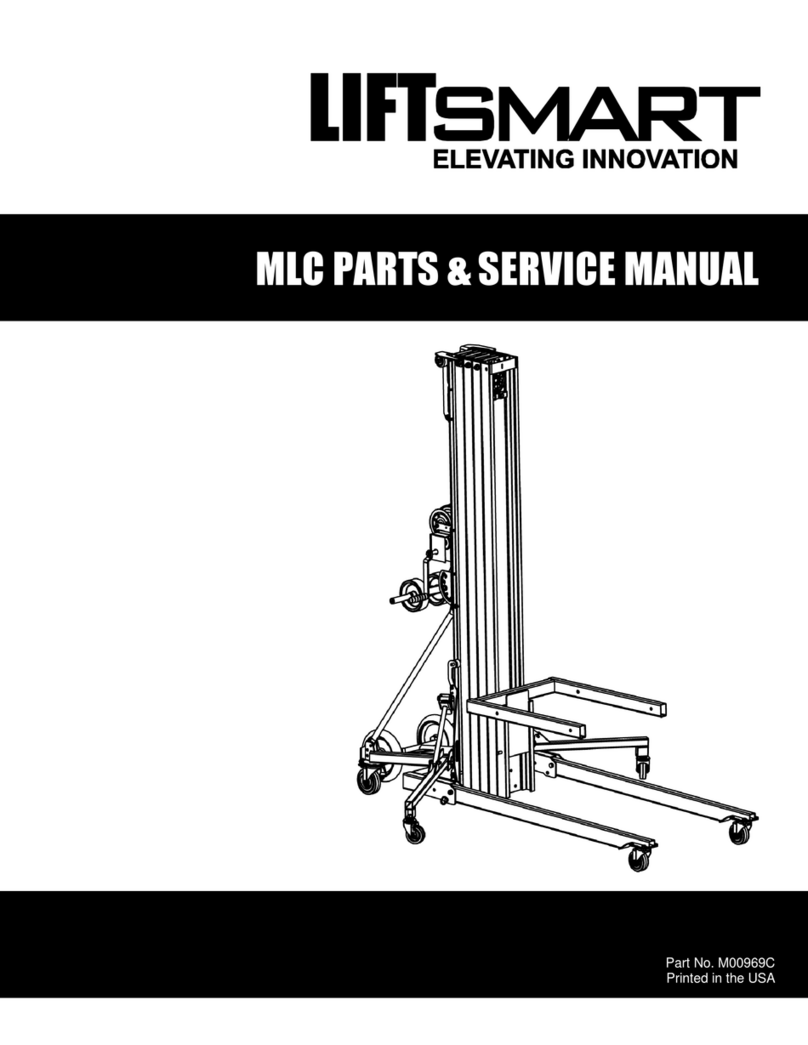
Operator’s Manual Part Number M00972A MLM Mini-Pro Series
2 Copyright © 2012 LiftSmart
BEFORE OPERATION
Follow these safety rules before operating
the material lift:
ALWAYS position the material lift on a firm,
level surface.
ALWAYS inspect
the work area for
potential hazards
such as overhead
obstructions,
unstable or slippery
surfaces, drop-offs,
holes, debris or
moving vehicles.
ALWAYS inspect the equipment before
operating the material lift. Check for
damaged or worn parts. NEVER operate a
material lift if any damage to the equipment
is observed or suspected. ALWAYS tag a
damaged material lift and remove it from
service until repairs are completed
according to manufacturer’s specifications.
ALWAYS inspect the winch and cable
before operating the material lift. Check for
wear, frays, kinks and damage to the cable.
Verify that the cable is wrapped around the
winch drum at least four times when the
carriage is lowered. NEVER operate a
material lift if any damage to the winch or
cable is observed or suspected.
NEVER repair the material lift in any way
other than according to manufacturer’s
specifications.
NEVER deface, modify or obscure any
decals or markings on the material lift.
NEVER modify the material lift in any way
that would affect its original design or
operation.
NEVER operate the material lift in any way
for which it is not intended.
DURING OPERATION
Follow these safety rules while operating
the material lift:
NEVER operate the material lift near power
lines. ALWAYS ensure that no part of the
material lift can accidentally reach into an
unsafe area.
DANGER
The material lift is NOT insulated for use
near electrical power lines and DOES
NOT provide protection from contact
with or proximity to any electrical
current. Maintain safe distances at all
times (minimum 3.05 meters; see chart
below). Allow for mast movement or
electrical line sway due to environmental
conditions. ALWAYS assume every
power line is live.
Voltage Range
(Phase to Phase)
Minimum Safe Approach Distance
Feet Meters
0 to 300V Avoid Contact
Over 300V to 50KV 10 3.05
Over 50KV to 200KV 15 4.60
Over 200KV to 350KV 20 6.10
Over 350KV to 500KV 25 7.62
Over 500KV to 750KV 35 10.67
Over 750KV to 1000KV 45 13.72
ALWAYS keep away
from a material lift
that is exposed to
energized power
lines. If the material
lift contacts energized
power lines, NEVER
touch or operate the
machine until power
lines are shut off.




























